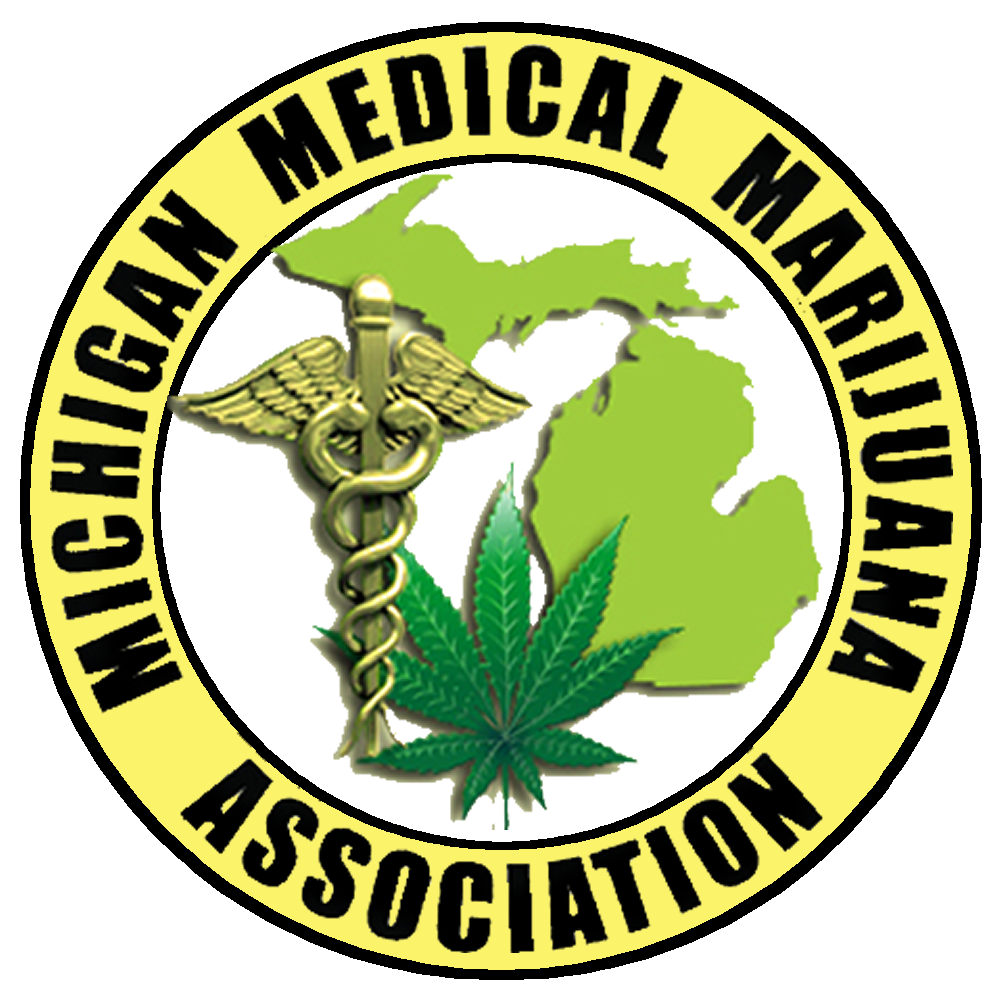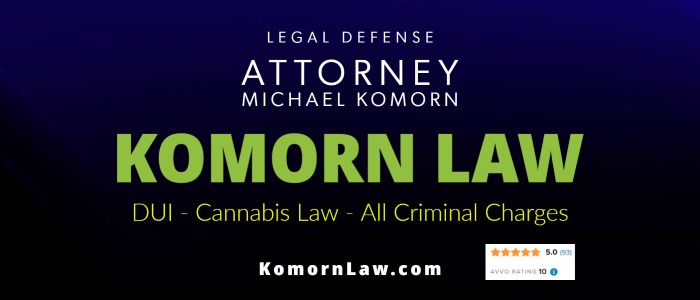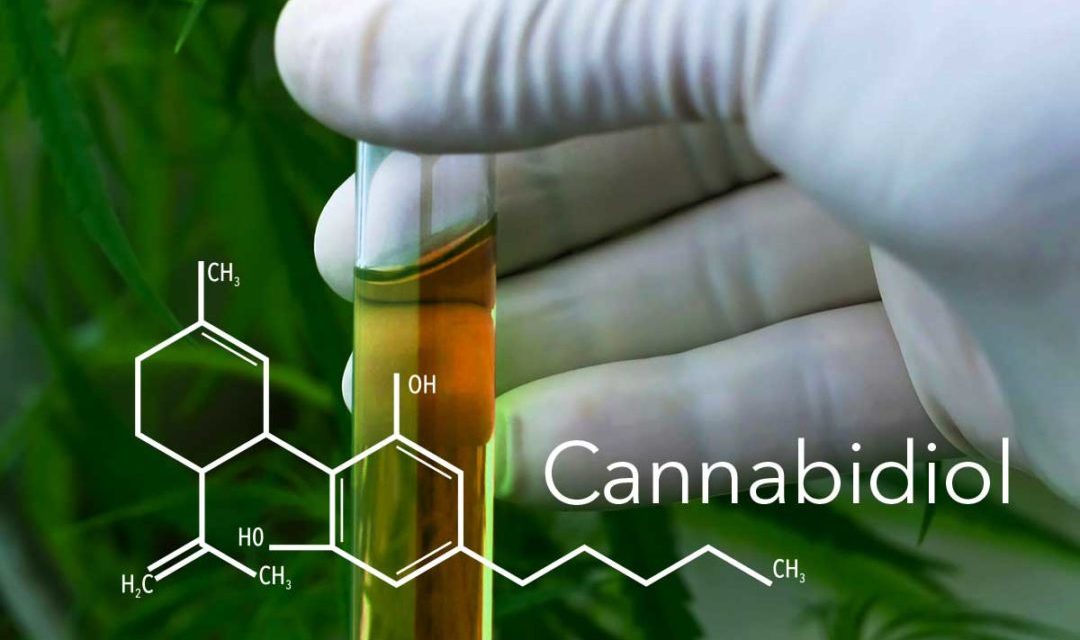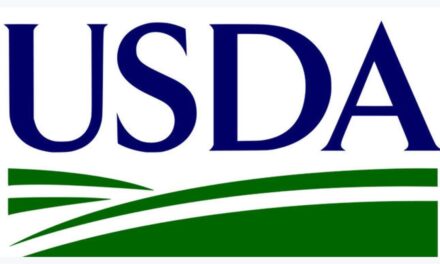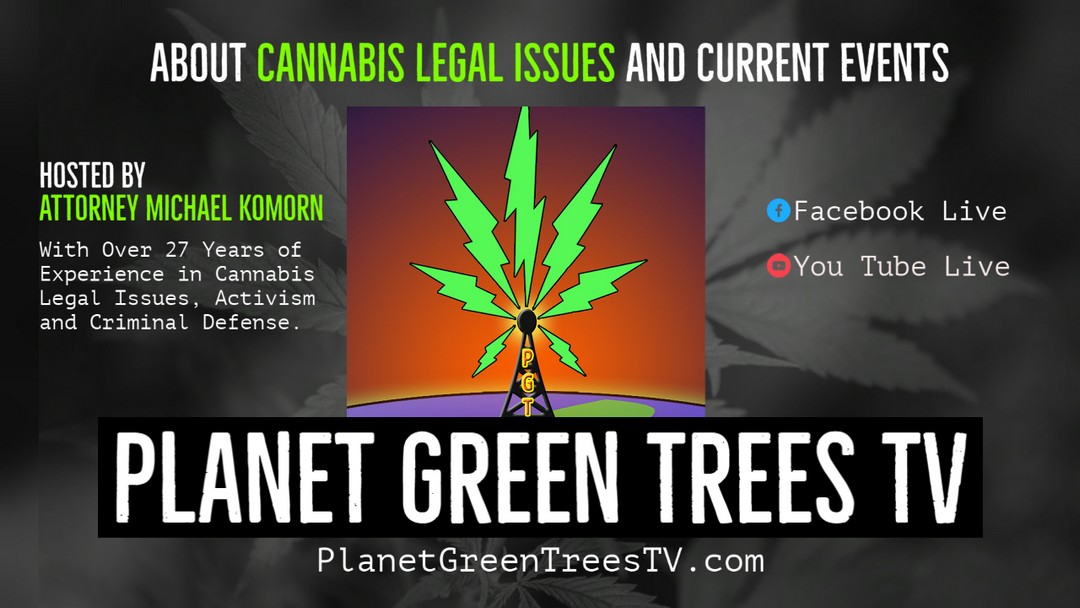There is a significant interest in the development of therapies and other consumer products derived from cannabis and its components, including cannabidiol (CBD). FDA recognizes the potential opportunities that cannabis or cannabis-derived compounds may offer and acknowledges the significant interest in these possibilities. However, FDA is aware that some companies are marketing products containing cannabis and cannabis-derived compounds in ways that violate the Federal Food, Drug and Cosmetic Act (FD&C Act) and that may put the health and safety of consumers at risk. The agency is committed to protecting the public health while also taking steps to improve the efficiency of regulatory pathways for the lawful marketing of appropriate cannabis and cannabis-derived products. FDA has a number of resources available that address cannabis and cannabis-derived products, such as CBD, and the agency wants to ensure that consumers and other stakeholders have access to these resources in a centralized location.
Consumer Information
- What You Need to Know (And What We’re Working to Find Out) About Products Containing Cannabis or Cannabis-derived Compounds, Including CBD
- What You Should Know About Using Cannabis, Including CBD, When Pregnant or Breastfeeding
- Some Medicines and Driving Don’t Mix
FDA Communications
- FDA Advances Work Related to Cannabidiol Products with Focus on Protecting Public Health, Providing Market Clarity
- Congressional Testimony: Cannabis Policies for the New Decade
- FDA warns 15 companies for illegally selling various products containing cannabidiol as agency details safety concerns
- Remarks at the Council for Responsible Nutrition Conference
- Remarks at the National Industrial Hemp Council 2019 Hemp Business Summit
- FDA, FTC warn company marketing unapproved cannabidiol products with unsubstantiated claims to treat teething and ear pain in infants, autism, ADHD, Parkinson’s and Alzheimer’s disease
- Congressional Testimony: Hemp Production and the 2018 Farm Bill
- FDA is Committed to Sound, Science-based Policy on CBD
- Remarks at the FDA Public Hearing on Scientific Data and Information about Products Containing Cannabis or Cannabis-Derived Compounds
- Statement on new steps to advance agency’s continued evaluation of potential regulatory pathways for cannabis-containing and cannabis-derived products
- Statement on signing of the Agriculture Improvement Act and the agency’s regulation of products containing cannabis and cannabis-derived compounds
- Statement on the importance of conducting proper research to prove safe and effective medical uses for the active chemicals in marijuana and its components
- FDA approves first drug comprised of an active ingredient derived from marijuana to treat rare, severe forms of epilepsy
Regulatory Resources
- Information on CBD Data Collection and Submission
- FDA and Cannabis: Research and Drug Approval Process
- FDA Regulation of Dietary Supplement & Conventional Food Products Containing Cannabis and Cannabis-Derived Compounds
- Scientific Data and Information about Products Containing Cannabis or Cannabis-Derived Compounds; Public Hearing
- Warning Letters and Test Results for Cannabidiol-Related Products
- State, Local, Tribal, Territorial (SLTT) Regulatory Officials: FDA is committed to working with our SLTT public health regulatory partners as developments occur in the regulatory landscape. Please contact the Intergovernmental Affairs team with any questions at IGA@fda.hhs.gov.
Questions and Answers
Below are a number of frequently asked questions and answers on this topic.
- What are cannabis and marijuana?
- How does the 2018 Farm Bill define hemp? What does it mean for FDA-regulated products?
- Has FDA approved any medical products containing cannabis or cannabis-derived compounds such as CBD?
- Aside from Epidiolex, are there other CBD drug products that are FDA-approved? What about the products I’ve seen in stores or online?
- Why hasn’t FDA approved more products containing cannabis or cannabis-derived compounds for medical uses?
- What is FDA’s reaction to states that are allowing cannabis to be sold for medical uses without the FDA’s approval?
- Has the agency received any adverse event reports associated with cannabis use for medical conditions?
- Is it legal for me to sell CBD products?
- Can THC or CBD products be sold as dietary supplements?
- Is it legal, in interstate commerce, to sell a food (including any animal food or feed) to which THC or CBD has been added?
- In making the two previous determinations about THC, why did FDA conclude that THC is an active ingredient in a drug product that has been approved under section 505 of the FD&C Act? In making the two previous determinations about CBD, why did FDA determine that substantial clinical investigations have been authorized for and/or instituted, and that the existence of such investigations has been made public?
- Can hulled hemp seed, hemp seed protein powder, and hemp seed oil be used in human food?
- What is FDA’s position on cannabis and cannabis-derived ingredients in cosmetics?
- Will FDA take action against cannabis or cannabis-related products that are in violation of the FD&C Act?
- Can I import or export cannabis-containing or cannabis-derived products?
- What is FDA’s role when it comes to the investigation of cannabis and cannabis-derived products for medical use?
- Does the FDA object to the clinical investigation of cannabis for medical use?
- How can patients gain access to cannabis or cannabis-derived products for medical use through expanded access?
- Can patients gain access to cannabis or cannabis-derived products for medical use through Right to Try?
- Does the FDA have concerns about administering a cannabis product to children?
- Does the FDA have concerns about administering a cannabis product to pregnant and lactating women?
- What does the FDA think about making CBD available to children with epilepsy?
- What should I do if my child eats something containing cannabis?
- I’ve seen cannabis products being marketed for pets. Are they safe?
- Can hemp be added to animal food?
- Can approved human drugs containing CBD or synthetic THC be used extralabel in animals?
1. What are cannabis and marijuana?
A. Cannabis is a plant of the Cannabaceae family and contains more than eighty biologically active chemical compounds. The most commonly known compounds are delta-9-tetrahydrocannabinol (THC) and cannabidiol (CBD). Parts of the Cannabis sativa plant have been controlled under the Controlled Substances Act (CSA) since 1970 under the drug class “Marihuana” (commonly referred to as “marijuana”) [21 U.S.C. 802(16)]. “Marihuana” is listed in Schedule I of the CSA due to its high potential for abuse, which is attributable in large part to the psychoactive effects of THC, and the absence of a currently accepted medical use of the plant in the United States.
2. How does the 2018 Farm Bill define hemp? What does it mean for FDA-regulated products?
A. At the federal level, the Agriculture Improvement Act of 2018, Pub. L. 115-334, (the 2018 Farm Bill) was signed into law on Dec. 20, 2018. Among other things, this new law changes certain federal authorities relating to the production and marketing of hemp, defined as “the plant Cannabis sativa L. and any part of that plant, including the seeds thereof and all derivatives, extracts, cannabinoids, isomers, acids, salts, and salts of isomers, whether growing or not, with a delta-9 tetrahydrocannabinol concentration of not more than 0.3 percent on a dry weight basis.” These changes include removing hemp from the CSA, which means that cannabis plants and derivatives that contain no more than 0.3 percent THC on a dry weight basis are no longer controlled substances under federal law.
The 2018 Farm Bill, however, explicitly preserved FDA’s authority to regulate products containing cannabis or cannabis-derived compounds under the FD&C Act and section 351 of the Public Health Service Act (PHS Act). FDA treats products containing cannabis or cannabis-derived compounds as it does any other FDA-regulated products — meaning they’re subject to the same authorities and requirements as FDA-regulated products containing any other substance. This is true regardless of whether the cannabis or cannabis-derived compounds are classified as hemp under the 2018 Farm Bill.
3. Has FDA approved any medical products containing cannabis or cannabis-derived compounds such as CBD?
A. To date, the agency has not approved a marketing application for cannabis for the treatment of any disease or condition. FDA has, however, approved one cannabis-derived and three cannabis-related drug products. These approved products are only available with a prescription from a licensed healthcare provider.
FDA has approved Epidiolex, which contains a purified form of the drug substance CBD for the treatment of seizures associated with Lennox-Gastaut syndrome or Dravet syndrome in patients 2 years of age and older. That means FDA has concluded that this particular drug product is safe and effective for its intended use.
The agency also has approved Marinol and Syndros for therapeutic uses in the United States, including for the treatment of anorexia associated with weight loss in AIDS patients. Marinol and Syndros include the active ingredient dronabinol, a synthetic delta-9- tetrahydrocannabinol (THC) which is considered the psychoactive component of cannabis. Another FDA-approved drug, Cesamet, contains the active ingredient nabilone, which has a chemical structure similar to THC and is synthetically derived.
4. Aside from Epidiolex, are there other CBD drug products that are FDA-approved? What about the products I’ve seen in stores or online?
A. No. There are no other FDA-approved drug products that contain CBD. We are aware that some firms are marketing CBD products to treat diseases or for other therapeutic uses , and we have issued several warning letters to such firms. Under the FD&C Act, any product intended to have a therapeutic or medical use, and any product (other than a food) that is intended to affect the structure or function of the body of humans or animals, is a drug. Drugs must generally either receive premarket approval by FDA through the New Drug Application (NDA) process or conform to a “monograph” for a particular drug category, as established by FDA’s Over-the-Counter (OTC) Drug Review. CBD was not an ingredient considered under the OTC drug review. An unapproved new drug cannot be distributed or sold in interstate commerce.
FDA continues to be concerned at the proliferation of products asserting to contain CBD that are marketed for therapeutic or medical uses although they have not been approved by FDA. Often such products are sold online and are therefore available throughout the country. Selling unapproved products with unsubstantiated therapeutic claims is not only a violation of the law, but also can put patients at risk, as these products have not been proven to be safe or effective. This deceptive marketing of unproven treatments also raises significant public health concerns, because patients and other consumers may be influenced not to use approved therapies to treat serious and even fatal diseases.
Unlike drugs approved by FDA, products that have not been subject to FDA review as part of the drug approval process have not been evaluated as to whether they work, what the proper dosage may be if they do work, how they could interact with other drugs, or whether they have dangerous side effects or other safety concerns.
The agency has and will continue to monitor the marketplace and take action as needed to protect the public health against companies illegally selling cannabis and cannabis-derived products that can put consumers at risk and that are being marketed for therapeutic uses for which they are not approved. At the same time, FDA recognizes the potential therapeutic opportunities that cannabis or cannabis-derived compounds could offer and acknowledges the significant interest in these possibilities. FDA continues to believe that the drug approval process represents the best way to help ensure that safe and effective new medicines, including any drugs derived from cannabis, are available to patients in need of appropriate medical therapy. The Center for Drug Evaluation and Research (CDER) is committed to supporting the development of new drugs, including cannabis and cannabis-derived drugs, through the investigational new drug (IND) and drug approval process (see Question #16).
5. Why hasn’t FDA approved more products containing cannabis or cannabis-derived compounds for medical uses?
A. FDA is aware that unapproved cannabis or cannabis-derived products are being used for the treatment of a number of medical conditions including, for example, AIDS wasting, epilepsy, neuropathic pain, spasticity associated with multiple sclerosis, and cancer and chemotherapy-induced nausea.
To date, FDA has not approved a marketing application for cannabis for the treatment of any disease or condition and thus has not determined that cannabis is safe and effective for any particular disease or condition. The agency has, however, approved one cannabis-derived and three cannabis-related drug products (see Question #2).
FDA relies on applicants and scientific investigators to conduct research. The agency’s role, as laid out in the FD&C Act, is to review data submitted to the FDA in an application for approval to ensure that the drug product meets the statutory standards for approval.
The study of cannabis and cannabis-derived compounds in clinical trial settings is needed to assess the safety and effectiveness of these substances for the treatment of any disease or condition. FDA’s December 2016 Guidance for Industry: Botanical Drug Development provides specific recommendations on submitting INDs for botanical drug products, such as those derived from cannabis, in support of future marketing applications for these products. The FDA will continue to facilitate the work of companies interested in appropriately bringing safe, effective, and quality products to market, including scientifically-based research concerning the medicinal uses of cannabis. Additional information concerning research on the medical use of cannabis is available from the National Institutes of Health, particularly the National Cancer Institute (NCI) and National Institute on Drug Abuse (NIDA).
6. What is FDA’s reaction to states that are allowing cannabis to be sold for medical uses without the FDA’s approval?
A. The FDA is aware that several states have either passed laws that remove state restrictions on the medical use of cannabis and its derivatives or are considering doing so. It is important to conduct medical research into the safety and effectiveness of cannabis products through adequate and well-controlled clinical trials. We welcome the opportunity to talk with states who are considering support for medical research of cannabis and its derivatives, so that we can provide information on Federal and scientific standards.
7. Has the agency received any adverse event reports associated with cannabis use for medical conditions?
A. The agency has received reports of adverse events in patients using cannabis or cannabis-derived products to treat medical conditions. The FDA reviews such reports and will continue to monitor adverse event reports for any safety signals, with a focus on serious adverse effects.
Information from adverse event reports regarding cannabis use is extremely limited; FDA primarily receives adverse event reports for approved products. General information on the potential adverse effects of using cannabis and its constituents can come from clinical trials that have been published, as well as from spontaneously reported adverse events sent to the FDA. Additional information about the safety and effectiveness of cannabis and its constituents is needed. Clinical trials of cannabis conducted under an IND application could collect this important information as a part of the drug development process.
8. Is it legal for me to sell CBD products?
A. It depends, among other things, on the intended use of the product and how it is labeled and marketed. Even if a CBD product meets the definition of “hemp” under the 2018 Farm Bill (see Question #2), it still must comply with all other applicable laws, including the FD&C Act. The below questions and answers explain some of the ways that specific parts of the FD&C Act can affect the legality of CBD products.
We are aware that state and local authorities are fielding numerous questions about the legality of CBD. There is ongoing communication with state and local officials to answer questions about requirements under the FD&C Act, to better understand the landscape at the state level, and to otherwise engage with state/local regulatory partners.
9. Can THC or CBD products be sold as dietary supplements?
A. No. Based on available evidence, FDA has concluded that THC and CBD products are excluded from the dietary supplement definition under section 201(ff)(3)(B) of the FD&C Act [21 U.S.C. § 321(ff)(3)(B)]. Under that provision, if a substance (such as THC or CBD) is an active ingredient in a drug product that has been approved under section 505 of the FD&C Act [21 U.S.C. § 355], or has been authorized for investigation as a new drug for which substantial clinical investigations have been instituted and for which the existence of such investigations has been made public, then products containing that substance are excluded from the definition of a dietary supplement. FDA considers a substance to be “authorized for investigation as a new drug” if it is the subject of an Investigational New Drug application (IND) that has gone into effect. Under FDA’s regulations (21 CFR 312.2), unless a clinical investigation meets the limited criteria in that regulation, an IND is required for all clinical investigations of products that are subject to section 505 of the FD&C Act.
There is an exception to section 201(ff)(3)(B) if the substance was “marketed as” a dietary supplement or as a conventional food before the drug was approved or before the new drug investigations were authorized, as applicable. However, based on available evidence, FDA has concluded that this is not the case for THC or CBD.
FDA is not aware of any evidence that would call into question its current conclusions that THC and CBD products are excluded from the dietary supplement definition under section 201(ff)(3)(B) of the FD&C Act. Interested parties may present the agency with any evidence that they think has bearing on this issue. Our continuing review of information that has been submitted thus far has not caused us to change our conclusions.
When a substance is excluded from the dietary supplement definition under section 201(ff)(3)(B) of the FD&C Act, the exclusion applies unless FDA, in the agency’s discretion, has issued a regulation, after notice and comment, finding that the article would be lawful under the FD&C Act. To date, no such regulation has been issued for any substance.
Ingredients that are derived from parts of the cannabis plant that do not contain THC or CBD might fall outside the scope of this exclusion, and therefore might be able to be marketed as dietary supplements. However, all products marketed as dietary supplements must comply with all applicable laws and regulations governing dietary supplement products. For example, manufacturers and distributors who wish to market dietary supplements that contain “new dietary ingredients” (i.e., dietary ingredients that were not marketed in the United States in a dietary supplement before October 15, 1994) generally must notify FDA about these ingredients (see section 413(d) of the FD&C Act [21 U.S.C. § 350b(d)]). Generally, the notification must include information demonstrating that a dietary supplement containing the new dietary ingredient will reasonably be expected to be safe under the conditions of use recommended or suggested in the labeling. A dietary supplement is adulterated if it contains a new dietary ingredient for which there is inadequate information to provide reasonable assurance that the ingredient does not present a significant or unreasonable risk of illness or injury (see section 402(f)(1)(B) of the FD&C Act [21 U.S.C. 342(f)(1)(B)]).
Numerous other legal requirements apply to dietary supplement products, including requirements relating to Current Good Manufacturing Practices (CGMPs) and labeling. Information about these requirements, and about FDA requirements across all product areas, can be found on FDA’s website.
10. Is it legal, in interstate commerce, to sell a food (including any animal food or feed) to which THC or CBD has been added?
A. No. Under section 301(ll) of the FD&C Act [21 U.S.C. § 331(ll)], it is prohibited to introduce or deliver for introduction into interstate commerce any food (including any animal food or feed) to which has been added a substance which is an active ingredient in a drug product that has been approved under section 505 of the FD&C Act [21 U.S.C. § 355], or a drug for which substantial clinical investigations have been instituted and for which the existence of such investigations has been made public. There are exceptions, including when the drug was marketed in food before the drug was approved or before the substantial clinical investigations involving the drug had been instituted or, in the case of animal feed, that the drug is a new animal drug approved for use in feed and used according to the approved labeling. However, based on available evidence, FDA has concluded that none of these is the case for THC or CBD. FDA has therefore concluded that it is a prohibited act to introduce or deliver for introduction into interstate commerce any food (including any animal food or feed) to which THC or CBD has been added. FDA is not aware of any evidence that would call into question these conclusions. Interested parties may present the agency with any evidence that they think has bearing on this issue. Our continuing review of information that has been submitted thus far has not caused us to change our conclusions.
When this statutory prohibition applies to a substance, it prohibits the introduction into interstate commerce of any food to which the substance has been added unless FDA, in the agency’s discretion, has issued a regulation approving the use of the substance in the food (section 301(ll)(2) of the FD&C Act [21 U.S.C. § 331(ll)(2)]). To date, no such regulation has been issued for any substance.
Ingredients that are derived from parts of the cannabis plant that do not contain THC or CBD might fall outside the scope of 301(ll), and therefore might be able to be added to food. For example, as discussed in Question #12, certain hemp seed ingredients can be legally marketed in human food. However, all food ingredients must comply with all applicable laws and regulations. For example, by statute, any substance intentionally added to food is a food additive, and therefore subject to premarket review and approval by FDA, unless the substance is generally recognized as safe (GRAS) by qualified experts under the conditions of its intended use, or the use of the substance is otherwise excepted from the definition of a food additive (sections 201(s) and 409 of the FD&C Act [21 U.S.C. §§ 321(s) and 348]). Aside from the three hemp seed ingredients mentioned in Question #12, no other cannabis or cannabis-derived ingredients have been the subject of a food additive petition, an evaluated GRAS notification, or have otherwise been approved for use in food by FDA. Food companies that wish to use cannabis or cannabis-derived ingredients in their foods are subject to the relevant laws and regulations that govern all food products, including those that relate to the food additive and GRAS processes.
11. In making the two previous determinations about THC, why did FDA conclude that THC is an active ingredient in a drug product that has been approved under section 505 of the FD&C Act? In making the two previous determinations about CBD, why did FDA determine that substantial clinical investigations have been authorized for and/or instituted, and that the existence of such investigations has been made public?
A. THC (dronabinol) is the active ingredient in the approved drug products, Marinol capsules (and generics) and Syndros oral solution. CBD is the active ingredient in the approved drug product, Epidiolex.
The existence of substantial clinical investigations regarding THC and CBD have been made public. For example, two such substantial clinical investigations include GW Pharmaceuticals’ investigations regarding Sativex. (See Sativex Commences US Phase II/III Clinical Trial in Cancer PainExternal Link Disclaimer )
12. Can hulled hemp seed, hemp seed protein powder, and hemp seed oil be used in human food?
A. In December 2018, FDA completed its evaluation of three generally recognized as safe (GRAS) notices for the following hemp seed-derived food ingredients: hulled hemp seed, hemp seed protein powder, and hemp seed oil. FDA had no questions regarding the company’s conclusion that the use of such products as described in the notices is safe. Therefore, these products can be legally marketed in human foods for the uses described in the notices, provided they comply with all other requirements. These GRAS notices related only to the use of these ingredients in human food. To date, FDA has not received any GRAS notices for the use of hemp-derived ingredients in animal food (see Question #25).
Hemp seeds are the seeds of the Cannabis sativa plant. The seeds of the plant do not naturally contain THC or CBD. The hemp seed-derived ingredients that are the subject of these GRAS notices contain only trace amounts of THC and CBD, which the seeds may pick up during harvesting and processing when they are in contact with other parts of the plant. Consumption of these hemp seed-derived ingredients is not capable of making consumers “high.”
The GRAS conclusions can apply to ingredients for human food marketed by other companies, if they are manufactured in a way that is consistent with the notices and they meet the listed specifications. Some of the intended uses for these ingredients include adding them as source of protein, carbohydrates, oil, and other nutrients to beverages (juices, smoothies, protein drinks, plant-based alternatives to dairy products), soups, dips, spreads, sauces, dressings, plant-based alternatives to meat products, desserts, baked goods, cereals, snacks and nutrition bars. Products that contain any of these hemp seed-derived ingredients must declare them by name on the ingredient list.
These GRAS conclusions do not affect the FDA’s position on the addition of CBD and THC to food.
13. What is FDA’s position on cannabis and cannabis-derived ingredients in cosmetics?
A. A cosmetic is defined in 201(i) as “(1) articles intended to be rubbed, poured, sprinkled, or sprayed on, introduced into, or otherwise applied to the human body or any part thereof for cleansing, beautifying, promoting attractiveness, or altering the appearance, and (2) articles intended for use as a component of any such articles; except that such term shall not include soap.”
Under the FD&C Act, cosmetic products and ingredients are not subject to premarket approval by FDA, except for most color additives. Certain cosmetic ingredients are prohibited or restricted by regulation, but currently that is not the case for any cannabis or cannabis-derived ingredients. Ingredients not specifically addressed by regulation must nonetheless comply with all applicable requirements, and no ingredient – including a cannabis or cannabis-derived ingredient – can be used in a cosmetic if it causes the product to be adulterated or misbranded in any way. A cosmetic generally is adulterated if it bears or contains any poisonous or deleterious substance which may render it injurious to users under the conditions of use prescribed in the labeling, or under such conditions of use as are customary or usual (section 601(a) of the FD&C Act [21 U.S.C. § 361(a)]).
If a product is intended to affect the structure or function of the body, or to diagnose, cure, mitigate, treat or prevent disease, it is a drug, or possibly both a cosmetic and a drug, even if it affects the appearance. (See Question #3 for more information about drugs.)
FDA can take action if it has information that an ingredient or cosmetic product is unsafe to consumers. Consumers can report adverse events associated with cosmetic products via the FDA’s MedWatch reporting system, either online or by phone at 1-800-FDA-1088, or by contacting your nearest FDA district office consumer complaint coordinator. For more information, please see the FDA’s webpage on how to report a cosmetic-related complaint.
14. Will FDA take action against cannabis or cannabis-related products that are in violation of the FD&C Act?
A. The FDA has sent warning letters in the past to companies illegally selling CBD products that claimed to prevent, diagnose, treat, or cure serious diseases, such as cancer. Some of these products were in further violation of the FD&C Act because they were marketed as dietary supplements or because they involved the addition of CBD to food.
When a product is in violation of the FD&C Act, FDA considers many factors in deciding whether or not to initiate an enforcement action. Those factors include, among other things, agency resources and the threat to the public health. FDA also may consult with its federal and state partners in making decisions about whether to initiate a federal enforcement action.
15. Can I import or export cannabis-containing or cannabis-derived products?
A. General information about the import/export of drug products regulated by FDA can be found online here. The Drug Enforcement Administration (DEA) is the federal agency responsible for enforcing the controlled substance laws and regulations in the U.S. and, as such, should be consulted with respect to any regulations/requirements they may have regarding the import or export of products containing cannabis. Please see here for information about importing or exporting food ingredients.
Regarding imports, if it appears that an article is adulterated, misbranded, in violation of section 505 of the FD&C Act, or prohibited from introduction or delivery for introduction into interstate commerce under section 301(ll) of the FD&C Act, such article will be refused admission (see section 801(a)(3) of the FD&C Act [21 U.S.C. § 381(a)(3)]).
Research and Expanded Access
16. What is FDA’s role when it comes to the investigation of cannabis and cannabis-derived products for medical use?
A. To conduct clinical research that can lead to an approved new drug, including research using materials from plants such as cannabis, researchers need to work with the FDA and submit an IND application to the Center for Drug Evaluation and Research (CDER). The IND application process gives researchers a path to follow that includes regular interactions with the FDA to support efficient drug development while protecting the patients who are enrolled in the trials. For research for use as an animal drug product, researchers would establish an investigational new animal drug (INAD) file with the Center for Veterinary Medicine to conduct their research, rather than an IND with CDER.
As discussed above (see Question #2), the 2018 Farm Bill removed hemp from the CSA. This change may streamline the process for researchers to study cannabis and its derivatives, including CBD, that fall under the definition of hemp, which could speed the development of new drugs.
Conducting clinical research using cannabis-related substances that are scheduled by the DEA often involves interactions with several federal agencies. This includes: a registration administered by the DEA; obtaining the cannabis for research from NIDA, within the National Institutes of Health, or another DEA-registered source; and review by the FDA of the IND or INAD application and research protocol. Additionally:
- For a Schedule I controlled substance under the CSA, DEA provides researchers with investigator and protocol registrations and has Schedule I-level security requirements at the site cannabis will be studied.
- NIDA provides research-grade cannabis for scientific study. The agency is responsible for overseeing the cultivation of cannabis for medical research and has contracted with the University of Mississippi to grow cannabis for research at a secure facility. Cannabis of varying potencies and compositions is available. DEA also may allow additional growers to register with the DEA to produce and distribute cannabis for research purposes.
- Researchers work with the FDA and submit an IND application to the appropriate division in the Office of New Drugs in CDER depending on the therapeutic indication. Based on the results obtained in studies conducted at the IND stage, sponsors may submit a marketing application for formal approval of the drug.
17. Does the FDA object to the clinical investigation of cannabis for medical use?
A. No. The FDA believes that scientifically valid research conducted under an IND application is the best way to determine what patients could benefit from the use of drugs derived from cannabis. The FDA supports the conduct of that research by:
- Providing information on the process needed to conduct clinical research using cannabis.
- Providing information on the specific requirements needed to develop a drug that is derived from a plant such as cannabis. In December 2016, the FDA updated its Guidance for Industry: Botanical Drug Development, which provides sponsors with guidance on submitting IND applications for botanical drug products.
- Providing specific support for investigators interested in conducting clinical research using cannabis and its constituents as a part of the IND process through meetings and regular interactions throughout the drug development process.
- Providing general support to investigators to help them understand and follow the procedures to conduct clinical research through the FDA Center for Drug Evaluation and Research’s Small Business and Industry Assistance group.
18. How can patients gain access to cannabis or cannabis-derived products for medical use through expanded access?
A. Expanded access is a potential pathway for a patient with a serious or life-threatening disease or condition to try an investigational medical product (drug, biologic, or medical device) for treatment outside of clinical trials when there are no comparable or satisfactory therapies available. Manufacturers may be able to make investigational drugs available to individual patients in certain circumstances through expanded access, as described in the FD&C Act and implementing regulations.
19. Can patients gain access to cannabis or cannabis-derived products for medical use through Right to Try?
A. Information for patients on Right to Try (RTT) is available on our website. RTT is designed to facilitate access to certain investigational drugs through direct interactions between patients, their physicians and drug sponsors – FDA is not involved in these decisions. Sponsors developing drugs for life-threatening conditions are responsible for determining whether to make their products available to patients who qualify for access under RTT. If you are interested in RTT, you should discuss this pathway with your licensed physician. Companies who develop drugs and biologics, also known as sponsors, can provide information about whether their drug/biologic is considered an eligible investigational drug under RTT and if they are able to provide the drug/biologic under the RTT Act.
Children and Pregnant/Lactating Women
20. Does the FDA have concerns about administering a cannabis product to children?
A. We understand that parents are trying to find treatments for their children’s medical conditions. However, the use of untested drugs can have unpredictable and unintended consequences. Caregivers and patients can be confident that FDA-approved drugs have been carefully evaluated for safety, efficacy, and quality, and are monitored by the FDA once they are on the market. The FDA continues to support sound, scientifically-based research into the medicinal uses of drug products containing cannabis or cannabis-derived compounds, and will continue to work with companies interested in bringing safe, effective, and quality products to market. With the exception of Epidiolex, Marinol, and Syndros, no product containing cannabis or cannabis-derived compounds (either plant-based or synthetic) has been approved as safe and effective for use in any patient population, whether pediatric or adult.
21. Does the FDA have concerns about administering a cannabis product to pregnant and lactating women?
A. The FDA is aware that there are potential adverse health effects with use of cannabis products containing THC in pregnant or lactating women. Published scientific literature reports potential adverse effects of cannabis use in pregnant women, including fetal growth restriction, low birth weight, preterm birth, small-for-gestational age, neonatal intensive care unit (NICU) admission, and stillbirth. [1, 2, 3] Based on published animal research, there are also concerns that use of cannabis during pregnancy may negatively impact fetal brain development. [4, 5, 6 ] The American College of Obstetricians and Gynecologists (ACOG) recommends that women who are pregnant or contemplating pregnancy should be encouraged to discontinue cannabis use. In addition, ACOG notes that there are insufficient data to evaluate the effects of cannabis use on breastfed infants; therefore, cannabis use is discouraged when breastfeeding. [7] Pregnant and lactating women should talk with a health care provider about the potential adverse health effects of cannabis use.
22. What does the FDA think about making CBD available to children with epilepsy?
A. The FDA has approved Epidiolex, which contains a purified form of the drug substance CBD, for the treatment of seizures associated with Lennox-Gastaut syndrome or Dravet syndrome in patients 2 years of age and older. That means the FDA has concluded that this particular drug product is safe and effective for its intended use. Controlled clinical trials testing the safety and efficacy of a drug, along with careful review through the FDA’s drug approval process, is the most appropriate way to bring cannabis-derived treatments to patients. Because of the adequate and well-controlled clinical studies that supported this approval, and the assurance of manufacturing quality standards, prescribers can have confidence in the drug’s uniform strength and consistent delivery that support appropriate dosing needed for treating patients with these complex and serious epilepsy syndromes.
23. What should I do if my child eats something containing cannabis?
A. With the exception of products such as the hemp seed ingredients discussed in Question #12, which have been evaluated for safety, it is important to protect children from accidental ingestion of cannabis and cannabis-containing products. FDA recommends that these products are kept out of reach of children to reduce the risk of accidental ingestion. If the parent or caregiver has a reasonable suspicion that the child accidentally ingested products containing cannabis, the child should be taken to a physician or emergency department, especially if the child acts in an unusual way or is/feels sick.
Pets and other Animals
24. I’ve seen cannabis products being marketed for pets. Are they safe?
A. FDA is aware of some cannabis products being marketed as animal health products. We want to stress that FDA has not approved cannabis for any use in animals, and the agency cannot ensure the safety or effectiveness of these products. For these reasons, FDA cautions pet-owners against the use of such products and recommends that you talk with your veterinarian about appropriate treatment options for your pet.
Signs that your pet may be suffering adverse effects from ingesting cannabis may include lethargy, depression, heavy drooling, vomiting, agitation, tremors, and convulsions.
If you have concerns that your pet is suffering adverse effects from ingesting cannabis or any substance containing cannabis, consult your veterinarian, local animal emergency hospital or an animal poison control center immediately.
While the agency is aware of reports of pets consuming various forms of cannabis, to date, FDA has not directly received any reports of adverse events associated with animals given cannabis products. However, adverse events from accidental ingestion are well-documented in scientific literature. If you feel your animal has suffered from ingesting cannabis, we encourage you to report the adverse event to the FDA. Please visit Reporting Information about Animal Drugs and Devices to learn more about how to report an adverse event related to an animal drug or for how to report an adverse event or problem with a pet food.
25. Can hemp be added to animal food?
A. All ingredients in animal food must be the subject of an approved food additive petition or generally recognized as safe (GRAS) for their intended use in the intended species. If an animal food contains an ingredient that is not the subject of an approved food additive petition or GRAS for its intended use in the intended species, that animal food would be adulterated under section 402(a)(2)(C)(i) of the FD&C Act [21 U.S.C. § 342(a)(2)(C)(i)]. In coordination with state feed control officials, CVM also recognizes ingredients listed in the Official Publication (OP) of the Association of American Feed Control Officials (AAFCO) as being acceptable for use in animal food. At this time, there are no approved food additive petitions or ingredient definitions listed in the AAFCO OP for any substances derived from hemp, and we are unaware of any GRAS conclusions regarding the use of any substances derived from hemp in animal food. Learn more about animal food ingredient submissions here.
With respect to products labeled to contain “hemp” that may also contain THC or CBD, as mentioned above it is a prohibited act under section 301(ll) of the FD&C Act to introduce or deliver for introduction into interstate commerce any animal food to which THC or CBD has been added.
26. Can approved human drugs containing CBD or synthetic THC be used extralabel in animals?
A. The Animal Medicinal Drug Use Clarification Act of 1994 (AMDUCA), permits veterinarians to prescribe extralabel uses of approved human and animal drugs for animals under certain conditions. Extralabel use must comply with all the provisions of AMDUCA and its implementing regulation at 21 CFR § 530. Among other limitations, these provisions allow extralabel use of a drug only on the lawful order of a licensed veterinarian in the context of a valid veterinarian-client-patient relationship and only in circumstances when the health of an animal is threatened or suffering, or death may result from failure to treat.
In addition, under 21 CFR 530.20, extralabel use of an approved human drug in a food-producing animal is not permitted if an animal drug approved for use in food-producing animals can be used in an extralabel manner for the use. In addition, under 21 CFR 530.20(b)(2), if scientific information on the human food safety aspect of the use of the approved human drug in food-producing animals is not available, the veterinarian must take appropriate measures to ensure that the animal and its food products will not enter the human food supply.
For more information on extralabel use of FDA approved drugs in animals, see Extralabel Use of FDA Approved Drugs In Animals.
[1] Gray, et al. Identifying Prenatal Cannabis Exposure and Effects of Concurrent Tobacco Exposure on Neonatal Growth. Clinical Chemistry. 2010; 56(9): 1442-1450.
[2] Gunn, et al. Prenatal Exposure to cannabis and maternal and child health outcomes: a systematic review and meta-analysis. BMJ Open. 2016; 6:e009986.
[3] Hayatbakhsh, et al. Birth Outcomes associated with cannabis use before and during pregnancy. Pediatric Research. 2012; 71 (2): 215-219.
[4] Silva, et al. Prenatal tetrahydrocannabinol (THC) alters cognitive function and amphetamine response from weaning to adulthood in the rat. Neurotoxicol and Teratol 2012; 34(1): 63-71.
[5] Trezza, et al. Effects of perinatal exposure to delta-9-tetrahydrocannabinol on the emotional reactivity of the offspring: a longitudinal behavioral study in Wistar rats. Psychopharmacology (Berl) 2008; 198(4): 529-537.
[6] Campolongo, et al. Perinatal exposure to delta-9-tetrahydrocannabinol causes enduring cognitive deficits associated with alteration of cortical gene expression and neurotransmission in rats. Addict Biol 2007; 12(3-4): 485–495.
[7] ACOG Committee Opinion: Marijuana Use During Pregnancy and LactationExternal Link Disclaimer
Content current as of:
03/11/2020
